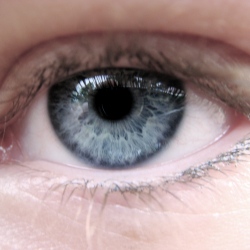
We first learned of Innovega’s vision for augmented reality back in 2012 when the company received a contract from DARPA to develop the iOptik prototype for the battlefield. Though it is clear that the technology could serve many uses outside of the military.
Before we get too excited, the iOptik system does not offer a solution for potential stigma attached to the less-than-discreet Google Glass, as it too requires a pair of glasses to function. Acting as a micro-display, the glasses project a picture onto the contact lens, which works as a filter to separate the real-world from the digital environment and then interlaces them into the one image.
According to the company, the technology enables users to focus on objects right in front of their eyes and in the distance simultaneously, offering an alternative solution to traditional near-eye displays which create the illusion of an object in the distance so as not to hinder regular vision.
Embedded in the contact lenses are micro-components that enable the user to focus on near-eye images. Light projected by the display (glasses) passes through the center of the pupil and then works with the eye’s regular optics to focus the display on the retina, while light from the real-life environment reaches the retina via an outer filter. This creates two separate images on the retina which are then superimposed to create one integrated image, or augmented reality.
